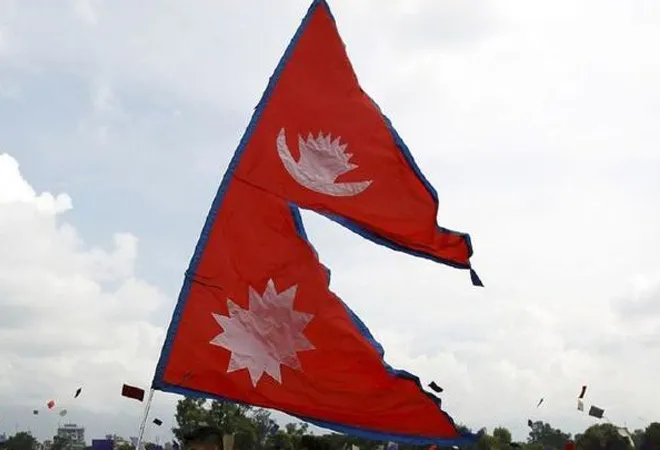-
CENTRES
Progammes & Centres
Location
The recent census data sheds light on issues like an ageing population, overpopulation in the Terai region, and the ecological impact of the rising population

Recently, Nepal’s Central Bureau of Statistics (CBS) released its 12th National Census in the presence of Prime Minister Pushpa Kamal Dahal. It showed that Nepal’s total population in November 2021 had risen to 29.2 million from 26.4 million in 2011. Despite the rise in population, the rate of growth fell perceptibly to 0.92 percent in 2021 from 1.35 percent in 2011. The growth rate of the population in the country is even lower than the global average of 1.01 percent (2020). In fact, the rate of growth of the population in Nepal in 2021 is the lowest it has ever been since the country started taking the population census in 1911.
Several factors are responsible for the decline in the rate of growth of population in the country. Over the years, the literacy rate has increased to 76.3 percent, which led to a rise in the level of awareness of the people. People now give more importance to their living standards rather than giving birth to (more) children. Additionally, the population also declined on account of factors like the outmigration of youth from the country, increase in the cost of child-rearing, greater participation of women in the workforce, and delayed age for marriage.
In fact, the rate of growth of the population in Nepal in 2021 is the lowest it has ever been since the country started taking the population census in 1911.
The new census report also shows features of an ageing population. Between 2011 and 2021, the population of children aged 14 years or below declined from 34.91 percent to 27.83 percent. On the other hand, the working-age population in the 15-59 years age group increased from 56.96 percent in 2011 to 61.96 percent in 2021. Alongside this, the population aged 60 years or above during the same period shot up from 8.13 percent to 10.21 percent. Such an increase in the life expectancy of the people is due to greater investment in healthcare financing and improvement in maternal care. However, with the growth in the ageing population, the liability of the government to provide social security for the elderly population has increased. This is has been amplified by the eligibility age for elderly allowance being reduced from 70 years to 68 years from the beginning of the fiscal year 2022-23. The government is now worried about meeting the growing expenses on the elderly allowance, which has become an added burden on the state treasury.
But more than anything else, what worries the nation the most after the release of the new census report is the imbalance in population growth that occurred in the three ecological belts of the country, namely the Himalayan or mountainous region, the hills, and the flat land of the Terai bordering India. Among the three ecological regions of the country, the Terai or Madhesh region has the highest population with 54 percent of Nepal’s people. This is followed by the hill region with nearly 40 percent of the population and the mountain region with 6 percent of the population. Even the combined population of the mountain and hill regions together (46 percent) is less than the population of the Terai (54 percent).
With the growth in the ageing population, the liability of the government to provide social security for the elderly population has increased.
Many people believe that the regional population imbalance is far worse than what the government statistics reveal. The seriousness of the situation caused by the depopulating mountains and the hills is well articulated by Tankamaya, the Deputy Chair of Chaubise Rural Municipality in the eastern hill region of Nepal. She said, “No matter what we do to keep people here, they just want to leave; it is becoming a national problem…We keep talking about rural development, but there is no one left to develop here. It hurts to see them abandon their ancestral land like this.”
In the past, the population of those living in the mountain and hill regions were more than the population living in the Terai. But now the scenario is the reverse. Both the mountain and hill regions are getting depopulated while the Terai region is becoming overpopulated. Most of the people in the mountain and the hills have deserted their traditional settlements as they have migrated mostly to the Terai region or the lower Himalayan region such as Kathmandu. Also, many of them have not returned to their homes after migrating to other countries in search of jobs.
The real challenge before the nation is not merely the imbalance in the regional population, but the fact that the internal migration of the population from the north to the south has given rise to severe natural calamities in the Terai region. Though covering only only17 percent of the country’s total land area, the Terai region carries 54 per cent of the country’s total population. On the other hand, the mountain and hill regions cover 83 percent of the total land area but contain only 46 percent of the population. Because of the migration of people to the Terai, the entire Chure or the Shivalik range, and the foothills of the Himalayas, are disturbed.
Most of the people in the mountain and the hills have deserted their traditional settlements as they have migrated mostly to the Terai region or the lower Himalayan region such as Kathmandu.
Forest regions both in the Chure and the Terai have been depleted on a massive scale due to the formation of new settlements over these regions. Since the Chure range used to be the water head for the entire Terai and the regions below in North India, the water table in these regions has been drastically affected. Besides, soil erosion and landslides have raised the riverbeds to such an extent that each year both the Terai region in Nepal and regions across Nepal’s border in India are getting submerged with flood water, especially during the monsoon season. Instead of carrying the manures as in the past, these rivers flowing from Nepal to India are carrying mostly silts during the monsoon season which spoil the agricultural land by turning them gradually into deserts.
Thus, in several ways, the new 2021 census data in Nepal is an eye-opener as it has brought to the surface many serious issues like an ageing population, depopulation of several mountain and hill regions, overpopulation of the Terai region, inundation, and desertification of agricultural land. More useful information would have been gathered if the census data had also come out with figures on other important aspects as ethnicity, language, and religion. Nevertheless, it has given planners and policymakers enough on their plates to formulate policies and strategies to address the emerging challenges related to a changing demographic.
The views expressed above belong to the author(s). ORF research and analyses now available on Telegram! Click here to access our curated content — blogs, longforms and interviews.

Hari Bansh Jha was a Visiting Fellow at ORF. Formerly a professor of economics at Nepal's Tribhuvan University, Hari Bansh’s areas of interest include, Nepal-China-India strategic ...
Read More +